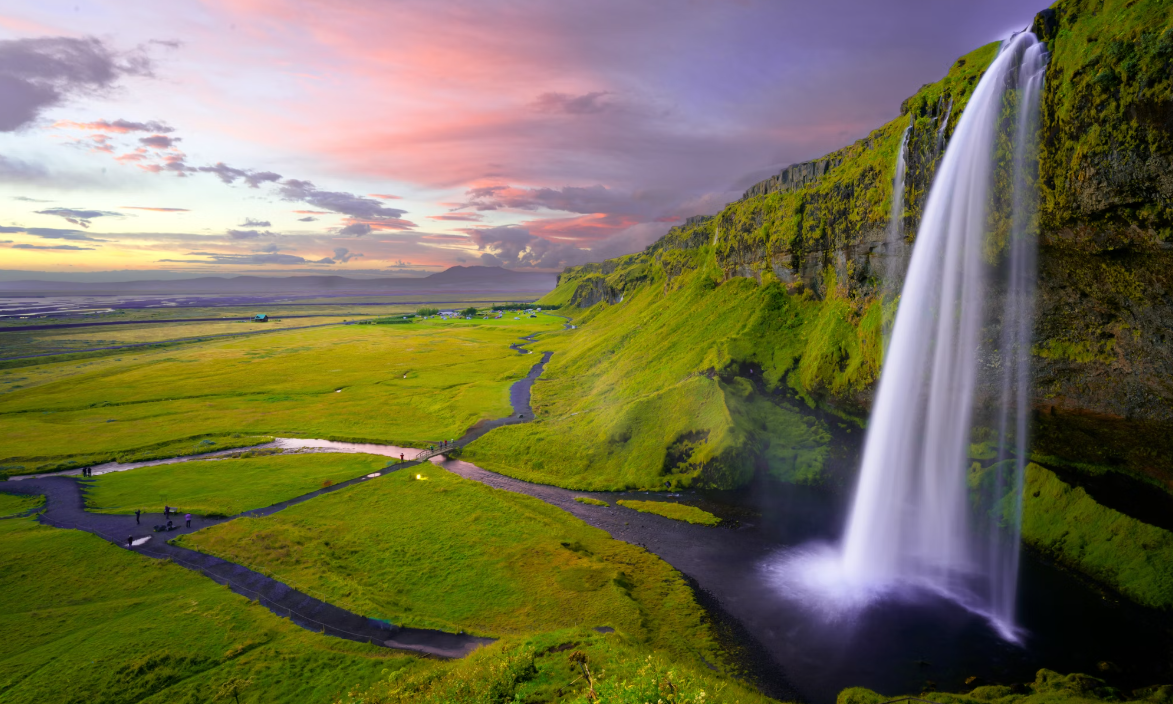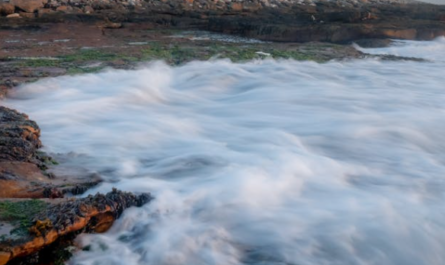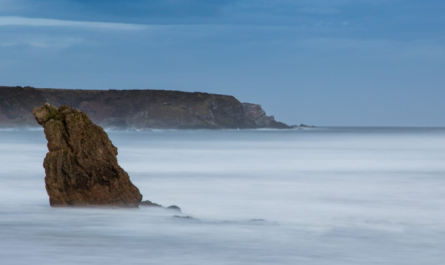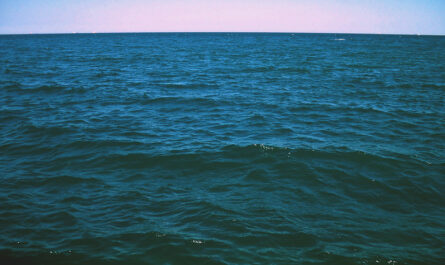Stretching across the wild, windswept expanses of the North Atlantic, from Iceland’s volcanic shores to the rugged cliffs of the Faroe Islands, lies a tapestry of myths and legends woven by generations of seafarers. These stories—of giants turned to stone, seal‑people who walk among humans, hidden spirits guarding fjords, and spectral ships that haunt fog‑shrouded nights—served as both cautionary tales and expressions of wonder at a world shaped by wind, ice, and sea. Though modern navigation has replaced ravens and rune‑castings, these enduring narratives continue to shape cultural identity, inspire art and tourism, and remind us of humanity’s timeless fascination with the mysteries of the deep.
1. Raven‑Flóki’s Epic Voyage: Naming Ísland
Long before Iceland was settled en masse, a Norwegian navigator named Hrafna‑Flóki Vilgerðarson embarked on a voyage that would etch his name into saga lore. Known as Raven‑Flóki for his ingenious use of three ravens to guide his longship, he departed from the Faroe Islands in search of new lands. When released, the first raven flew back to the ship, signaling they were not yet near land; the second hovered overhead before returning, indicating proximity; the third soared northwest until lost to view, guiding Flóki’s crew toward the shores of what would become Iceland.
Arriving in summer, they found green valleys and abundant streams. Yet after a brutal winter spent in Vatnsfjörður, Flóki climbed a nearby mountain—likely Nónfell—and gazed upon a fjord choked with ice. Disillusioned by the harshness of the climate, he named the land “Ísland” (Ice‑land) and returned to Norway, declaring it inhospitable. Later settlers, however, saw promise in its resources and fertile plains, and Flóki himself returned to live out his days among the very people he once dismissed. His saga exemplifies the Viking spirit of exploration, the power of perseverance, and the ambivalent awe inspired by the North Atlantic’s extremes.
2. Risin og Kellingin: Giants Frozen in Time
Off the northern coast of Eysturoy in the Faroe Islands stand two striking sea stacks known as Risin (the Giant) and Kellingin (the Witch). According to local legend, a jealous giant in Iceland sent Risin and his wife, Kellingin, across the sea to steal the Faroe Islands. One stormy night, they hauled on a massive rope tied around the archipelago’s backbone, intending to drag it back to Iceland. Unbeknownst to them, dawn’s first light petrified all giants and trolls. The rope snapped, leaving Risin and Kellingin forever frozen—giant and witch turned to stone—facing their homeland across the waves.
Over centuries, wind and waves have reshaped these basalt pillars, yet their distinctive silhouettes still evoke the ancient tale. Risin’s broad, squat form and Kellingin’s arched back continue to captivate visitors, serving as a geological monument to folklore’s power to explain and personify the landscape’s dramatic features.
3. Kópakonan: The Heartbreaking Seal Woman
The Faroese legend of Kópakonan—the Seal Woman or Selkie—speaks to the tension between freedom and domesticity, human longing and animal instinct. In this tale, seals on moonlit beaches shed their skins to dance as women. A young farmer, entranced by one such seal‑maiden, steals her skin and hides it, compelling her to stay on land and marry him. For years she lives as his wife, bearing children and tending hearth and home, yet she never fully belongs. On January 6th—Old Christmas Day in Faroese tradition—the seals gather, and the woman, her heart torn, finds her hidden skin and returns to the sea, leaving her human family in grief.
Variations of this narrative appear throughout the North Atlantic—Scotland’s Orkney Islands, Ireland’s western coasts, and even Iceland—underscoring a shared maritime heritage. These stories warn of the perils of possession and the irrepressible pull of one’s true nature, while also highlighting the complex bonds between human communities and the creatures of the sea.
4. Hidden People and Landvættir: Guardians of the Wild
In Icelandic and Faroese culture, the landscape teems with hidden people (huldufólk) and landvættir—spirits or guardians inhabiting rocks, hills, and fjords. Farmers in remote valleys traditionally avoid disturbing certain boulders, believing elves dwell within; entire road projects have been rerouted to spare elf habitats. In Iceland’s Hvalfjörður, a protective spirit resembling a whale was said to guard the fjord; when King Olaf Tryggvason threatened to tax the region, the locals showed him a live landvættir, prompting the king to spare Hvalfjörður from taxation.
Similarly, Faroese fishermen honored Dýrahylur—spirits of sea caves—by offering tobacco before departure, believing these entities guided fish shoals and ensured safe returns. Such customs illustrate a worldview in which humans, animals, and spirits share a reciprocal relationship: respect and ritual secure prosperity, while arrogance invites misfortune.
5. Draugr and Shipwreck Specters: Ghosts of the Deep
The North Atlantic’s treacherous currents and hidden reefs spawned legends of draugr—undead sea‑spirits who haunt shipwrecks and lure unwary sailors to their doom. Fishermen spoke of eerie lights bobbing on the waves, voices calling from the deep, or phantom ships crewed by the drowned. In Iceland’s Westfjords, a ghost ship was said to appear on foggy nights, its tattered sails full despite the still air, and its skeletal crew calling sailors aboard with haunting horns. Those who heard its summons often met mysterious fates within days.
These spectral tales reinforced the dangers of maritime travel, underscoring the importance of ritual blessings for vessels and the community’s collective respect for the sea’s power. They also provided a means to process the grief of loss, as vanished friends and kin were woven into narratives that kept their memory alive beneath the waves.
6. Seal‑Wife Variations Across the North Atlantic
Beyond the Faroes, seal‑wife stories abound in Orkney, Shetland, and the Irish west coast. In Iceland, the selma recounts a seal‑maiden combing her hair on a black‑sand beach; a fisherman steals her comb to force her marriage, only for her to reclaim it and vanish with her children. Scottish tales tell of selkies who marry humans but return to the sea at the first sight of their hidden skins, often leaving human offspring to bridge the worlds.
These narratives reflect a shared recognition of seals’ liminal status—both familiar and alien, human‑like and wild. They explore themes of identity, belonging, and the consequences of transgressing natural boundaries, resonating across cultures that relied on seals for sustenance and regarded them with both respect and mystery.
7. The Lady of the House: Benevolent Farm Spirits
In Icelandic farmsteads, the kirkjufé or “church cattle” were spectral guardians who ensured livestock fertility and household well‑being. One tale tells of a noblewoman’s ghost who appears at midnight to inspect animals; a well‑kept herd earns her blessing, while neglect invites her wrath—illness among cattle or failed crops. Such legends, blending pagan ancestor worship with Christian morality, reinforced communal values of hospitality, diligence, and reverence for the unseen. They also offered reassurance that benevolent forces watched over isolated farms amid the stark landscape.
8. Shipwrecked Kings and the Birth of Dynasties
Icelandic sagas recount how shipwrecked nobles washed ashore, married local women, and founded prominent lineages. Garðar Svavarsson, a Swedish Viking, accidentally circumnavigated Iceland and briefly settled there before naming it Garðarshólmi. Later, Flóki’s voyages and Ingólfur Arnarson’s settlement in Reykjavík illustrate how chance and fate intertwined to shape Iceland’s population. These stories underscore a belief in divine providence guiding human destiny, and they cemented genealogies that lent social cohesion to nascent communities.
9. Aurora Borealis: Celestial Dancers and Omens
The northern lights—norðurljós in Icelandic—have inspired myriad interpretations. In some Faroese tales, the aurora’s shifting ribbons are souls of mariners lost at sea, dancing in eternal celebration of their bravery. Icelanders sometimes saw the lights as the spirits of the departed guiding new arrivals to the afterlife. Others read auroral shapes—arches, curtains, flickers—as omens: a broad, steady glow foretold fair weather and abundant fish, while flickering, pulsating waves signaled storms or harsh winters. These celestial phenomena, beyond the comprehension of early observers, became woven into navigational lore and seasonal forecasting.
10. Modern Revival: Folklore in Tourism and Art
Today, North Atlantic myths thrive in literature, music, and tourism. Iceland hosts guided “elf‑tours,” leading visitors to alleged hidden‑people dwellings; the annual Viking Festival reenacts saga battles and Norse rituals. In the Faroes, cultural festivals stage performances of Risin og Kellingin, while local artists sculpt Kópakonan in stone and bronze. Folk musicians draw on traditional tunes and lyrics to evoke maritime legends, and writers reimagine ancient sagas in contemporary novels. These cultural revivals not only preserve heritage but also drive economic vitality, as travelers seek immersive experiences that connect them to the landscape’s living mythology.
11. Enduring Themes and Cultural Significance
Across these diverse tales, several recurring motifs emerge:
- Man vs. Nature: Whether it’s Raven‑Flóki’s struggle against ice or shipwrecked kings forging new lives, these stories highlight humanity’s resilience and vulnerability in the face of elemental forces.
- Liminal Beings: Selkies, landvættir, and draugr occupy thresholds between worlds—land and sea, life and death, human and animal—reflecting a worldview that acknowledges mystery beyond rational understanding.
- Reciprocity and Respect: Ritual offerings to spirits, care for hidden‑people dwellings, and farmstead blessings underscore a moral economy in which prosperity depends on honoring unseen powers.
- Cultural Identity: These legends forged communal bonds, legitimized social hierarchies, and provided shared narratives that anchored isolated populations to place and ancestry.
12. Conclusion: Myth as Compass and Anchor
Though GPS, satellite forecasts, and modern vessels have largely supplanted ravens, runes, and ritual, the myths and legends of the North Atlantic remain vital cultural compasses. They anchor communities to their ancestors, explain the unexplainable, and infuse the landscape with wonder. As you sail past ice‑lined fjords or gaze upon sea stacks carved by millennia of wind and wave, remember that every crag and current carries a story—a testament to humanity’s enduring need to weave narrative around the wild edges of our world. In honoring these seafaring tales, we keep alive a legacy of respect for nature’s power and an appreciation for the mysteries that continue to beckon from beyond the horizon.



